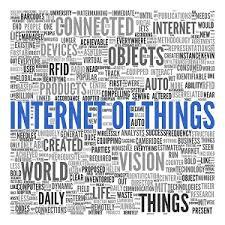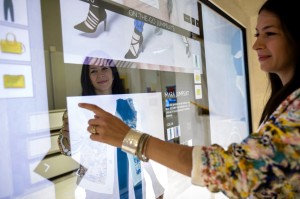 How the IoT Retail is revolutionizing retail models
How the IoT Retail is revolutionizing retail models
The Internet of Things (IoT), or to use the term coined by major contributor Cisco, the Internet of Everything (IoE) will have far-reaching impacts on retail, as well as any industry that it touches such as companies that install these technologies like crestron installation in london. The distinction is the IoT is connecting devices, similar to an intranet whereas the IoE is connecting networks, companies, consumers – thus ‘everything’.
Much like the early 1990s when the internet itself began to extend into mainstream culture, IoT’s virtually limitless applications make it difficult to fully comprehend what those impacts might be although we do know it has the promise to revolutionize how we live our lives, communicate, shop and conduct business.
Since the widespread adoption of smartphones in our everyday lives,
technology and changing consumer shopping behaviors have disrupted the traditional retail model. ‘Always connected’ consumers demand more options, personalization and a richer shopping experience. As consumers demand a more convenient, hyper-relevant shopping experience the power of IoT Retail enables merchants to engage shoppers with innovations fueled by mobility, video and analytics.
IoT Retail at-a-glance
At its most basic, connected, low cost sensors make the IoT Retail possible by monitoring the physical world (i.e. temperature, pressure, motion, proximity to something else, etc.). But they are only one component in the complex IoT Retail ecosystem. Aggregation, relationship and analysis of the vast quantities of the information these devices produce is essential to create meaningful actions. Companies that focus on the integration, analysis, value-add and actionable processes using this data are expected to be the most successful in the IoT Retail arena.
Connecting devices across a variety of networks and organizations requires standards to ensure accurate, consistent and persistent communications. We saw the same need for standards when POS moved from proprietary to open systems in the 1990s – the NRF responded with the Association for Retail Technology Standards (ARTS) focused on the implementation of technology standards.
In the absence of standards, today’s IoT Retail ecosystem increasingly uses cloud computing and RFID technologies because they transform data into a common format – regardless of vendor or device.
Retail’s transformation with the IoT
“With the Internet of Things, retailers will be empowered with the intelligence to make strategic, informed business decisions that improve customer loyalty and associate effectiveness while creating exciting experiences for their shoppers” says Nick D’Alessio, global practice leader for Zebra Technologies.
Cisco Consulting Services (Cisco) defined the key value drivers for the IoE in retail as:
SAVINGS with IoE solutions that include general in-store offers (digital signage), special offers (augmented reality) and target offers (digital signage)
EFFICIENCY checkout optimization, in-store guidance (digital signage; augmented reality), scan-and-play (smartphone), drive through pick-up and same-day delivery are the identified IoE solutions whereas
ENGAGEMENT includes reviews (augmented reality), in-store advertising and product recommender (augmented reality).
With analytics, in-store sensors (i.e. Bluetooth beacons) and existing video technology, retailers can monitor in-store patterns recording path-to-purchase data by tracking smartphones throughout the store. They can determine where shoppers are spending more time in the store (dwell time) and which shelves require restocking. Out of stocks are greatly reduced, merchandising and store layouts are optimized, the shopping experience is improved and retailers benefit from better store performance. In fact, Cisco estimates that retailers effectively using IoT can capture a 15.6 per cent profit improvement. For a $20 billion retailer, that translates to $312 million in increased profits.
CXOtoday.com recapped Cisco’s testing of some IoT shopping concepts and their resulting consumer acceptance. Those highly regarded by consumers included:
Using a smartphone to scan products for special in-store, personalized offers and promotions (73 percent)
In-store guidance with augmented reality apps that help customers locate shopping list items in the store (63 percent)
Smartphone checkout by scanning barcodes on items while shopping to track and pay at the self-service checkout (60 percent)
Drive through lane at store to pick-up products ordered online (57 percent)
Same day delivery at home for orders placed online (53 percent)
“Smart online shopping cart” uses information from smart home appliances, purchasing history and items added by the consumer to maintain a constantly updated virtual cart reflecting current purchase needs (50 percent)
Mobile wallet by storing several payment cards on smartphones and smartwatches to pay in stores by swiping the device at the checkout (49 percent)
From an efficiency perspective, IoT enables retailers to optimize employee productivity for processes such as checkout and on-shelf-availability by tapping previously inaccessible sources of information to make more accurate predictions further into the future than before such as:
More accurately predict checkout demand
Tracking the density of shoppers and dwell times in key areas of the store
The rate at which product is leaving the shelf. Stock-outs are avoided as retailers can cost-effectively obtain accurate, real-time views of shelf condition, greatly improving the ability to predict when items need to be re-stocked.
The precise movement of shopping carts, baskets and mobile devices through the store gives retailers more visibility into their stores and shoppers than just looking at store traffic and queue statistics.
Key considerations with the IoT Retail
As retailers connect more in-store devices to the internet as well as in-store POS systems, their corporate networks can become more vulnerable. Retailers will need to use the same diligence protecting these devices as they currently do with their other networks to safeguard sensitive consumer data against breaches.
Training store associates about the application and benefits of IoT Retail will enable them to serve as advocates to further consumer acceptance.
Given the constant connecting with consumers, retailers should be sensitive to privacy concerns as well as creating meaningful ‘hyper-relevant’ communications at optimized intervals and locations to engage — not overload — interested consumers.
Thoughts or comments? We’d love to hear from you. Email us at info@mainstreetinc.net
Sources:
Winning the new digital consumer with hyper-relevance
IoE is changing the retail landscape. Here’s how.
Running on date: Activity trackers and the Internet of Things
